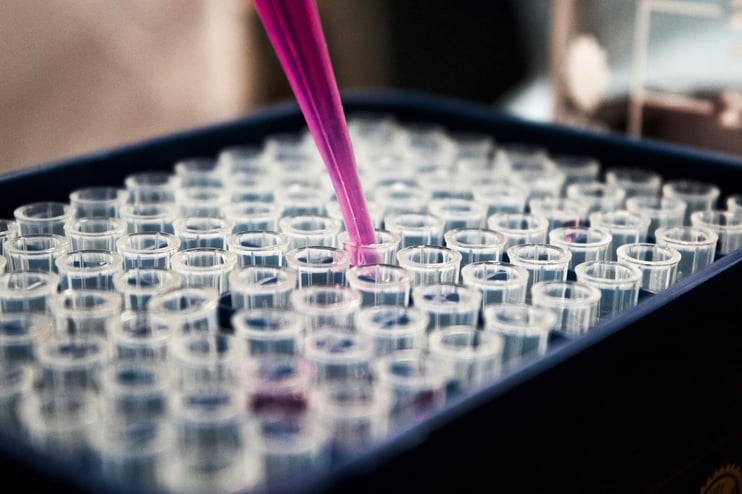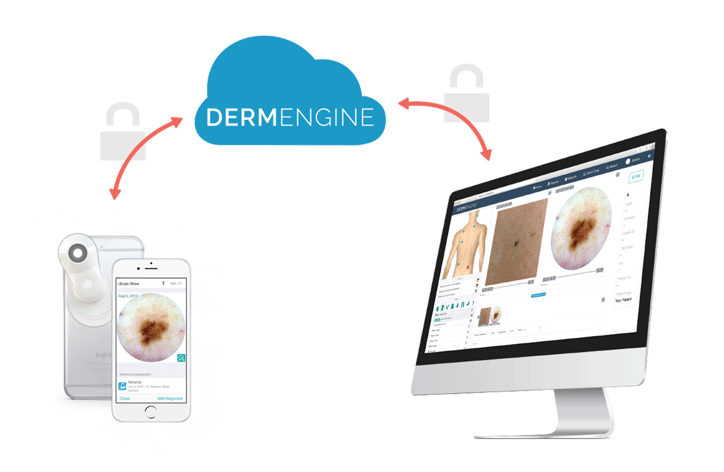by
The DermEngine Team on Jun 18, 2024
Pathology is a branch of medical science that involves the study of diseases and the changes they cause in body tissues and organs. Often the last step in diagnosing complex conditions, pathology is a critical part of a dermatologist or provider's workflow. How integrated this step is can often determine the accuracy of diagnoses and effectiveness of treatment plans.
1. What is Pathology?
Pathology is the study of the nature, causes, and effects of diseases. It analyzes samples of body tissue, cells, and fluids to understand disease mechanisms to identify abnormal conditions and guide clinical decision-making. Pathologists use a range of techniques to diagnose illnesses and contribute to medical research and patient care. A primary part of their job is collaborating with other medical departments to provide insights that support patient care and multidisciplinary treatments.

2. The Relationship between a Pathologist and Dermatologist
The dermatologist-pathologist relationship is essential for the effective detection and management of skin cancers. Dermatologists perform skin checks to identify suspicious lesions, then rely on pathologists to analyze the biopsied tissue samples. This collaboration ensures accurate diagnosis, guiding the dermatologist in developing their treatment plans. The synergy between these two specialists will have an impact on patient outcomes. If successful, it can help facilitate further research and advancements in the field of skin cancer treatment and prevention.
| |
- Accurate diagnosis
- Effective treatment planning
- Ongoing research and advancements in skin cancer
|
|
3. Challenges in Dermatology-Pathology Collaboration
If the adequate infrastructure lacks to support a relationship between a dermatologist and pathologist, the patient suffers ultimately. Treatment delays can arise due to these inefficient communication pathways in a pathology workflow. Additionally, opportunities for interdisciplinary learning and staying up to date on advancements are lost, hindering professional growth and potential innovation.
4. Potential Solution in Connectivity
Modern cloud-based platforms and secure data sharing can help achieve connectivity between dermatologists and pathologists. These systems ensure real-time updates and accurate communication, eliminating delays and miscommunications. Crucial patient information is shared instantly and securely for real-time collaboration between stakeholders in a patient's healthcare journey.

5. Pathology Lab Integration with DermEngine
Some dermatology software, such as DermEngine, have incorporated a pathology lab integration feature, to seamlessly allow communication between dermatologists and pathologists. Biopsy results can be requested and received directly within the platform. By streamlining this process, DermEngine is supporting collaboration while enhancing diagnostic accuracy, ultimately benefiting patient care. DermEngine's commitment to continuous improvement means the software evolves with user needs, incorporating feature requests whenever possible.
Conclusion
Pathology plays a crucial role in dermatology, aiding in the accurate diagnosis of skin conditions like cancer. When dermatologists and pathologists can collaborate effectively, patients benefit from timely diagnoses. Modern technologies, such as cloud-based platforms, facilitate seamless communication and real-time data sharing between these specialists. DermEngine is one example of an intelligent dermatology software that enhances collaboration between stakeholders using its pathology lab integration feature.
-The MetaOptima Team
Interested in the DermEngine system? Request a demo with one of our experts to explore around the platform today!







